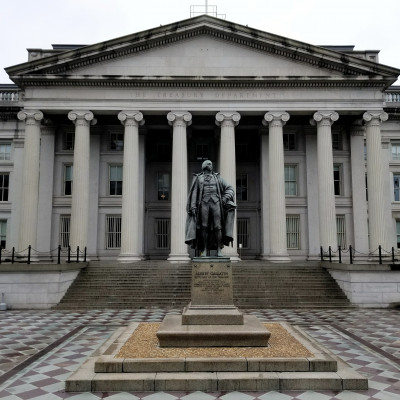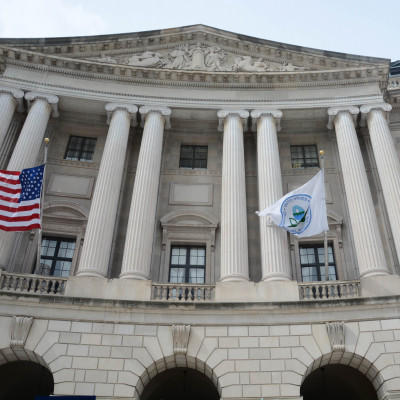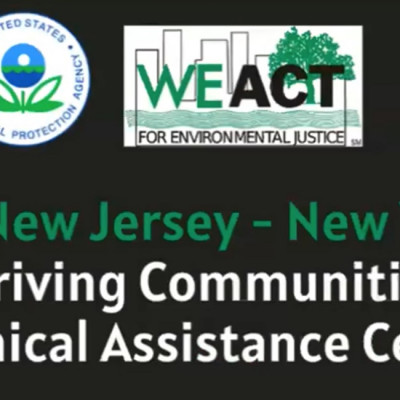September 3, 2024
August 2024 at Policy Integrity
- What Challengers Get Wrong About the SEC Climate Disclosure Rules
- 9/24 Conference: Emissions Accounting to Accelerate Decarbonization
- IRA Implementation Continues: Designing the Clean Electricity Tax Credits
- Defending EPA’s New Limits on Particulate Matter
- EPA Updated the Social Cost of Greenhouse Gases. Now What?
- Understanding Environmental Justice Laws and Policies — Training Recap
- More from This Month
-

What Challengers Get Wrong About the SEC Climate Disclosure Rules
As expected, court challenges to the finalized SEC Climate-Related Financial Disclosure Rules were swift and numerous. These challenges were eventually consolidated and made their way to the Court of Appeals for the Eighth Circuit, where we recently filed an amicus brief in support of the rules. Our brief argues that the challengers’ economic arguments about the rules’ costs and benefits suffer from fundamental flaws. At a basic level, the rules require public companies in the U.S. to make certain climate-related disclosures in their registration statements and annual reports, giving investors critical information to better balance risk in their portfolios. We argue that many companies already provide or will soon provide these disclosures voluntarily or to comply with mandatory disclosure laws in other jurisdictions, lessening these companies’ incremental costs of complying with the SEC rules. We further argue that the challengers fail to recognize the rules’ incremental benefits, which the SEC properly assessed. We also refute the challengers’ argument that the SEC failed to engage with a study that purportedly showed climate-related disclosures don’t actually matter to investors.
-

9/24 Conference: Emissions Accounting to Accelerate Decarbonization
Many governments and large corporations have made commitments to use a certain amount of clean energy by a target date. But who determines whether the energy they are using at any given moment qualifies as clean? The Greenhouse Gas Protocol has governed the existing greenhouse gas emissions-accounting standards since 1998, but many stakeholders have suggested possible improvements. Our September 24 conference, co-hosted by the Sustainable Engineering Initiative at NYU Tandon, will bring together a wide array of experts to discuss different approaches to carbon-emissions accounting and their potential to make clean-energy-procurement policies and corporate commitments more effective, in the U.S. and internationally. Click here for additional information — including a list of panelists — and register now!
-

IRA Implementation Continues: Designing the Clean Electricity Tax Credits
The Inflation Reduction Act spawned or increased a series of alphanumeric tax credits (think “45V” for clean hydrogen production and “45Q” for carbon sequestration) that will have deep and long-lasting effects on the energy economy. This month, we submitted comments on a proposed rule implementing the “45Y” Clean Electricity Production Credit and the “48E” Clean Electricity Investment Credit. Stakeholders commonly call these credits “technology-neutral” because they provide incentives for all clean electricity, unconstrained by selecting energy sources (like solar, wind or geothermal). Our comments focused specifically on the difficulty implicit in Treasury’s task of determining when electricity sourced from carbon-rich feedstock fuels should be eligible for clean electricity credits under this statute. We emphasized the need for Treasury to accurately account for waste methane fuel emissions and prevent unintended consequences, like carbon lock-in or emissions increases due to induced price effects.
-

Defending EPA’s New Limits on Particulate Matter
National Ambient Air Quality Standards (NAAQS) are limits that EPA is required to place on certain pollutants that are hazardous to human health. In March, the agency updated its standards for particulate matter (PM), but was quickly sued for doing so by the state of Kentucky and other petitioners who argued that it should have considered costs when deciding whether to revise the standards. In an amicus brief, we explain why this argument is flawed. First, EPA conducted a separate regulatory impact analysis in which it appropriately assessed the costs of the new standards. Second, considering costs in the regulatory decisionmaking itself would not have led to a less stringent limit: because of the significant benefits, a cost-benefit-based standard likely would have been more stringent. And third, there is no history of EPA considering costs when revising the NAAQS. In light of these arguments, we asked the Court of Appeals for the D.C. Circuit to reject the petition challenging the new standards and allow them to remain in place.
-

EPA Updated the Social Cost of Greenhouse Gases. Now What?
EPA’s recently updated social cost of greenhouse gases (SC-GHG) metrics, which assign a monetary value to the damage done by one ton of greenhouse gases released into the air, represent a significant step forward in our ability to properly analyze the benefits of environmental regulations. But their effectiveness will ultimately depend on the scale of their adoption. In a new blog post, our Kurt Weatherford explains how some other federal agencies, states, and foreign countries are beginning to incorporate EPA’s new values in their regulatory analyses and why additional governmental actors should do the same. On their own, the new numbers are a robust analytical success that applies the best available science and economics to some of the country's most significant environmental decisions. But with widespread use across the government, country, and globe, they can become a powerful weapon in the fight against climate change.
-

Understanding Environmental Justice Laws and Policies — Training Recap
As part of our partnership with EPA’s Region 2 Thriving Communities Technical Assistance Center, we recently hosted a virtual training for environmental justice (EJ) communities and advocates. This particular event focused on laws and policies that require federal and state government entities to consider environmental justice in their decisionmaking. The goal of the training was to help inform EJ advocates about these laws and policies, their opportunities and limitations, and how communities can leverage them to engage the government on EJ issues. A full recording and the slides from the presentation are available online. This training was part of a series that focuses on providing EJ communities with the tools to effectively engage with government at all levels, and future events in the series will be posted on our events page.
-
More from This Month
- The Illinois Commerce Commission incorporated some of our recommendations in its Future of Gas Phase 1 Facilitator Report.
- The Congressional Research Service citied our work in its recent report on marine carbon dioxide removal.
